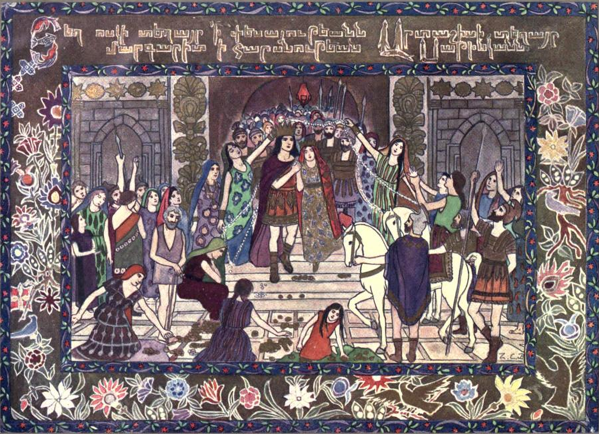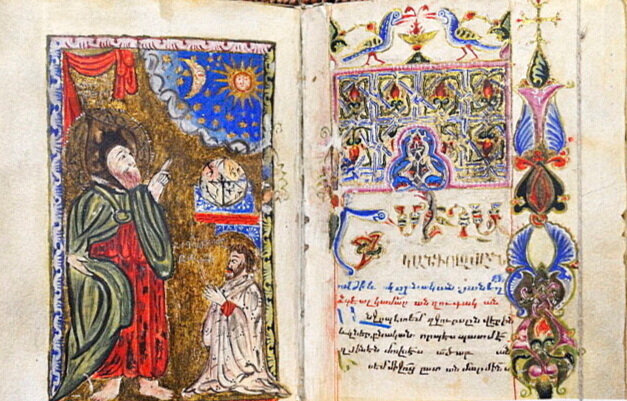“Creating a new organisation is like self-taxation – you’re going to make a lot of work for yourself. Why do it?” My friend’s question, back in 2001, was well-meant and certainly mostly correct – but nearly twenty years later, the Armenian Institute is thriving and I can say that he was wrong on some important points. I wasn’t alone – it was a lively and diverse team that created it and that has been true throughout its existence. It has been enjoyable work and the taxation has brought great dividends.
Given the size of London and how dispersed the relatively few Armenians are who live there, we felt the need to create events that would attract people to come together. We especially wanted to reach those who felt outside the more traditional Armenian institutions and design programmes that would also be of interest to non-Armenians. Criticised by many for not just joining existing groups, this phase passed as it became clearer that we were creating a new niche, not trying to repeat what was already being done.
For me, this idea began while doing fieldwork when often younger people would confide that “I feel Armenian until I go to one of those events.” It was not just the topic or the speaker that made them uneasy but a feeling they perceived that “being” Armenian meant having to fit a certain template, to have certain knowledge, to speak a certain way.
We have tried to make all feel welcome and also to ask what people thought was missing from Armenian community life, not just community activists but also those who felt like outsiders.
Our first event was meant to demonstrate how we intended to proceed. Prof. Khachig Tölölyan gave our first lecture (from which our first book was produced!): Redefining Diasporas: Old Approaches, New Identities. The Armenian Diaspora in an International Context. This dynamic public intellectual demonstrated that one can be academic and accessible, serious and entertaining, a pattern that we have tried to follow.
Two simultaneous events followed in the Maria Assumpta Centre: a display of Armenian-related books with related talks and a massive children’s dance and storytelling performance based on the tale of Anahit. To tell the story, choreographer and dancer Nikki Hu and musician Guy Van Duser were brought from Boston to build a team and demonstrate how they tell folktales through dance and music performed by large groups of children. Shakeh Tchilingirian Major (dancer), Vahan Kerovpyan (percussion) and Vergine Gulbenkian (storyteller) joined them in creating the piece, teaching and then performing with the children. An afternoon of storytelling followed the next day.
Children learning to dance: the Anahid story, 2001
Over the years the library has been a major source of delight for many, for others the varied performances and eclectic bringing together of different art and literary forms, and for many others, it is the East and West Armenian language classes that are especially appreciated. Interactive workshops have encouraged people to use and improve their own talents and the numerous and varied lectures over the years expand our knowledge and understanding of Armenian history and culture in both particular and universal contexts. Food and drink have been important as we gather over refreshments at events – but one of our most popular activities included the making and eating together of Manti, led by Rita Koundarjian and Sirarpie Manoogian.
AI language teachers Gagik Stepan-Sarkissian and Sona Kalenderian with Ani King Underwood at food workshop
Gagik Stepan-Sarkissian with language students
Early events included a day of learning about maps of Armenia with Rouben Galichian, Prof. Gabriella Uluhogian, and Prof. Claude Moutafian along with a children’s workshop also on maps of the historic Armenian world and diaspora.
Another was the international conference on Identities Without Borders including the opening lecture by Prof. Lord Bhikhu Parekh and numerous speakers representing other diaspora groups such as the Basque, Jewish, Greek and others.
Layered Lives - Iranian Armenian Contemporary Arts.
Catalogue cover of Treasured Objects
We were fortunate to be invited to join Abdollah Guivian and Veronica Castor to organise a major exhibition at SOAS’s Brunei Gallery. “Layered Lives: Iranian Armenian Identity Through Contemporary Arts” included a hung exhibition at the Gallery as well as numerous lectures and activities.
This was followed four years later by the display, also at the Brunei Gallery, of Osman Köker’s amazing postcard exhibition, “My Dear Brother: Armenians in Turkey 100 Years Ago”.
Granted the use of the upper space as well as the large lower ground floor, we created a sister exhibition with objects collected from families around London who had been able to keep special heirlooms from before the Genocide. These became Treasured Objects, described and illustrated in the book of the same name.
A very special event in 2013 brought together some 40 artists and performers in the basement rooms of Shoreditch Town Hall. “Salon Mashup: Displacement and Regeneration. Armenian perspectives of loss and resettlement” was designed as an exploration of these experiences through the arts. Director Seta White ensured that collaboration between the invited artists made this event truly one of the most exciting highlights in its diversity, scope and impact.
AI is grateful to have been supported for these events and many others by the Arts Council England, the National Lottery Heritage Fund, St Sarkis Trust, Benlian Charity Trust and generous individual donors.
Salon Mashup: Displacement and Regeneration. Director Seta White
Commemorating the centennial of the Genocide, AI organised a concert of international stars at the Wigmore Hall including Kim Kashkashian, Levon Chilingirian, Alexander Chaushian and Sergey Khatchatryan. The popular folk-fusion group Medz Bazar has come to London twice, playing to sell-out crowds and providing a song-writing workshop. Evenings of films, poetry, musical performances have alternated with book launches, lectures and town hall-style discussions on Armenian affairs and history. We are fortunate that many speakers pass through London or are here on other business and willing to give a talk while visiting.
The Sayat Nova Ensemble with leader, Levon Chilingirian. Conway Hall
Collectif Medz Bazar concert, Bush Hall, London
Taner Akçam lecture
It’s true that living in London, we really could “get by” by just attending what is already available around this amazing city. However, we don’t think of it as either/or but rather view our activities as fitting into the London social scene and cityscape, adding an Armenian element that is up to that standard. Most importantly, I am happy that the Armenian Institute has provided a lively space where Armenian culture and history can be explored and discussed in a spirit of inclusion, seeking context, connection and relevance to our everyday lives.
By Susan Pattie, AI’s director






























